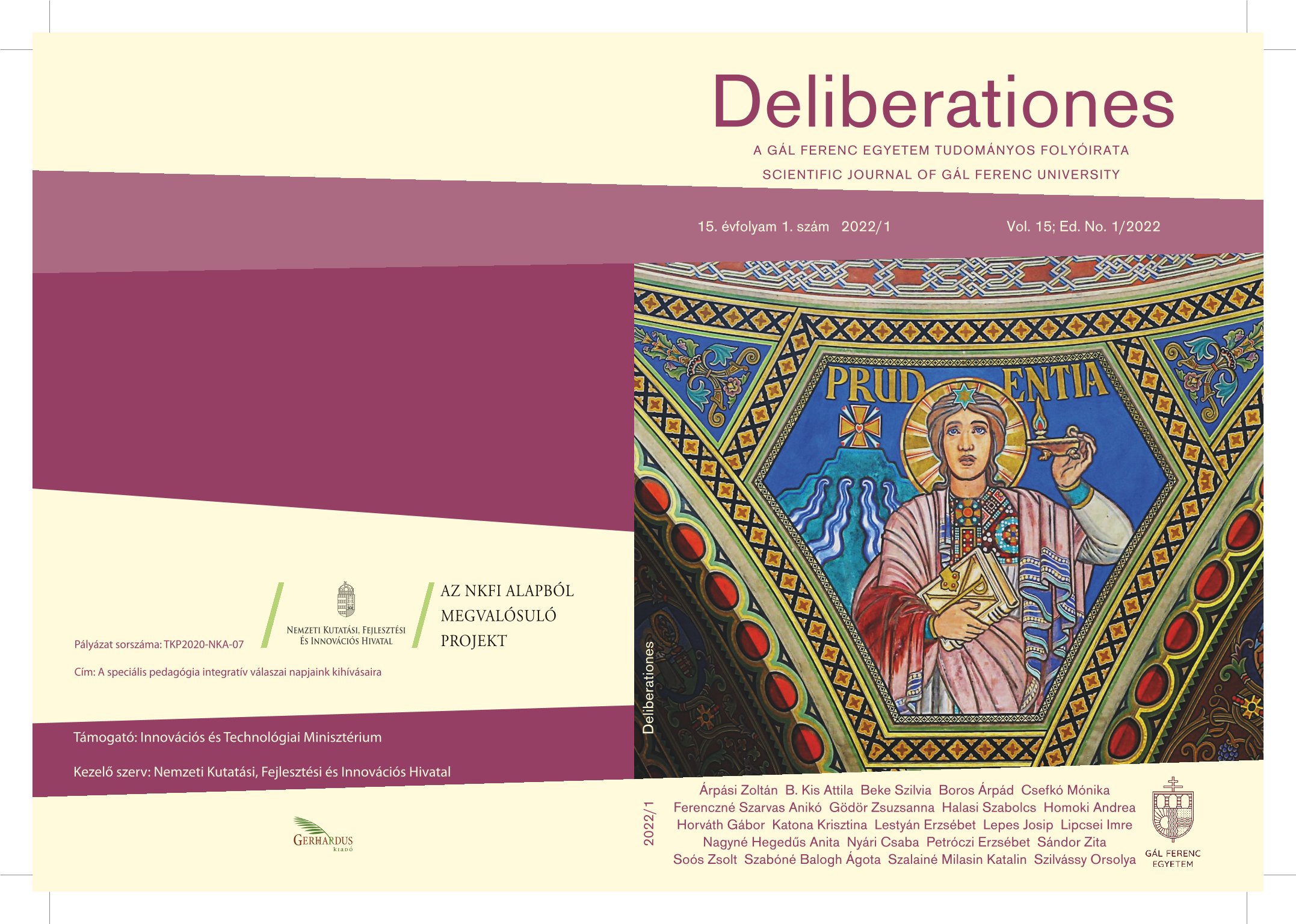Absztrakt
A népesség elöregedése a modern társadalom egyik legnagyobb kihívása, ami a világ közösségének problémáit és növekvő érdeklődését eredményezi a népesség egészségével, életminőségével és működőképességével kapcsolatban. Számos evolúcióbiológus egyetért azzal a tézissel, hogy az öregedés a szervezet funkcionális képességeinek „csökkenését” jelenti. A tanulmány célja az volt, hogy meghatározza a 12 hetes, erősítő gumiszalagokkal végzett alacsony terhelésű erősítő edzések hatását idős nők fizikai fittségére, egészségi mutatóira, hetente kettő, illetve hetente három edzéssel. Az adatok elemzése után egyértelműen elmondható, hogy az idősödő (60–75 éves) generáció még jelentős fizikai és szellemi tartalékokkal rendelkezik. Az öregedő társadalom egészségi, fizikai állapota nagymértékben a krónikus betegségek prevenciójától és gondozásától függ. A tudatos egészségmegőrzés, a fizikai állóképesség és a szellemi aktivitás edzése a betegségek megelőzésének leghatásosabb módszerei.
Hivatkozások
American College of Sport Medicine. (1995). Guidelines for exercise testing and prescription. Philadelphia: Lippincott Williams & Wilkins.
Bates, A., Donaldson, A., Lloyd, B., Castell, S., Krolik, P., & Coleman, R. (2009). Staying active, staying strong: pilot evaluation of a once weekly, community-based strength-training program for older adults. Health Promotion Journal of Australia, 20(1), 42 – 47.
Bruce, B., Fries, J. F., Hubert, H. (2008). Regular vigorous physical activity and disability development in healthy overweight and normal-weight seniors: a 13-year study. American Journal of Public Health, 98.
Chakravarty, K., & Webley, M. (1993). Shoulder joint movement and its relationship to disability in the elderly. The Journal of Rheumatology, 20(8), 1359–1361.
Chou, W. T., Tomata, Y., Watanabe, T., Sugawara, Y., Kakizaki, M., Tsuji, I. (2014). Relationships between changes in time spent walking since middle age and incident functional disability. Preventive Medicine Journal, 59.
Clark, B. C., Manini, T. A. (2008). Sarcopenia =/= dynapenia. Journal of Gerontology. Series A, Biological Sciences and Medical Sciences, 63(8).
Cress, M. E., Buchner, D. M., Proaska, T., Rimer, J., Brown, M., Macera, C., et al. (2005). Best practices for physical activity programs and behaviour counselling in older adult populations. Journal of Aging and Physical Activity. 13(1), 61–74.
Ebrahim, S., Wannamethee, S. G., Whincup, P., Walker, M., Shaper, A. G. (2000). Locomotor disability in a cohort of British men: the impact of lifestyle and disease. International Journal of Epidemiology, 29.
Ferrucci, L., Izmirlian, G., Leveille, S., Phillips, C. L., Corti, M. C., Brock, D. B., Guralnik, J. M. (1999). Smoking, physical activity, and active life expectancy. American Journal of Epidemiology, 149.
Flatt, T. (2012). A new definition of aging? Frontiers in Genetics, 3, 148.
Ganse, B., Degens, H., Drey, M., Korhonen, M. T., McPhee, J., Muller, K., Johannes, B. W., Rittweger, J. (2014). Impact of age, performance and athletic event on injury rates in master athletics – first results from an ongoing prospective study. Journal of Musculoskelet and Neuronal Interactions, 14.
Healy, G. N., Dunstan, D. W., Salmon, J., Cerin, E., Shaw, J. E., Zimmet, P. Z., Owen, N. (2008). Breaks in sedentary time: beneficial associations with metabolic risk. Diabetes Care, 31.
Kaptein, S. A., Gignac, M. A., & Badley, E. M. (2009). Differences in the work force experiences of women and men with arthritis disability: A population health perspective. Arthritis and Rheumatism, 61(5), 605–613.
Kim, L. G., Adamson, J., Ebrahim, S. (2013). Influence of lifestyle choices on locomotor disability, arthritis and cardiovascular disease in older women: prospective cohort study. Age Ageing, 42.
Macedo, L. G., & Magee, D. J. (2008). Differences in range of motion between dominant and nondominant sides of upper and lower extremities. Journal of Manipulative and Physiological Therapeutics, 31(8), 577–582.
Nemcek, D. (2009). Level of motor abilities determines risk of falls in elderly women. In Book of abstracts of International Scientific Conference, Physical Education and Sport in Research: Aging and Physical Activity. Rydzyna, p. 97.
NICE (2009). Rehabilitation after critical illness: NICE guideline National Institute for Health and Clinical Excellence. http://guidance.nice.org.uk/CG83/Guidance/pdf/English
Paterson, D. H., Warburton, D. E. (2010). Physical activity and functional limitations in older adults: a systematic review related to Canada’s physical activity guidelines. International Journal of Behavioral Nutrition and Physical Activity, 7.
Powell, K. E., Paluch, A. E., Blair, S. N. (2011). Physical activity for health: what kind? How much? How intense? On top of what? Annual Review of Public Health, 32.
Roh, K. H., Park, H. A. (2013). A meta-analysis of the effect of walking exercise on lower limb muscle endurance, whole body endurance and upper body flexibility in elders. Journal of Korean Academy of Nursing, 43, 536–546.
Rose, M. R. (1991). Evolutionary Biology of Aging. Oxford: Oxford University Press.
Ross, M.C., Bohannon, A.S., Davis, D.C., & Gurchiek, L.(1999). The effects of a short-term exercise program on movement, pain, and mood in the elderly: Pilot study results. Journal of Holistic Nursing, 17(2), 139–147.
Spirduso, W. W., Francis, K. & MacRae, P. (2005). Physical Dimensions of Aging. Champaign, IL: Human Kinetics.
Swain, D. P., Franklin, B. A. (2006). Comparison of cardioprotective benefits of vigorous versus moderate intensity aerobic exercise. The American Journal of Cardiology, 97.
Tekur, P., Nagendra, H. R., & Raghuram, N. (2008). Effect of short-term intensive yoga program on pain, functional disability and spinal flexibility in chronic low back pain: a randomised control study. Journal of Alternative and Complementary Medicine, 14(6), 637–644.
Wang, B. W., Ramey, D. R., Schettler, J. D., Hubert, H. B., Fries, J. F. (2002). Postponed development of disability in elderly runners: a 13-year longitudinal study. Archives of Internal Medicine, 162.
Wannamethee, S. G., Ebrahim, S., Papacosta, O., Shaper, A. G. (2005). From a postal questionnaire of older men, healthy lifestyle factors reduce the onset of and may have increased recovery from mobility limitation. Journal of Clinical Epidemiology, 58.
